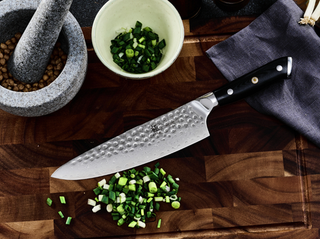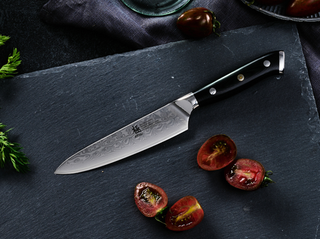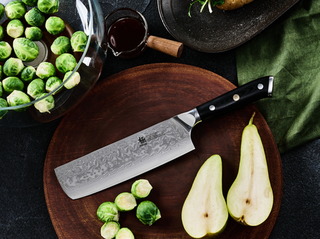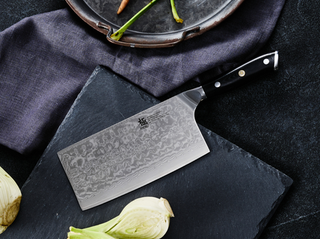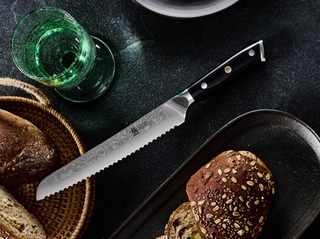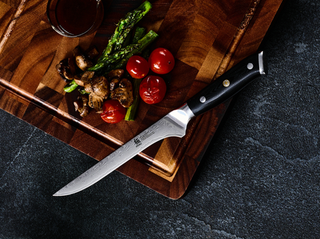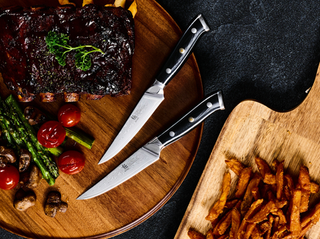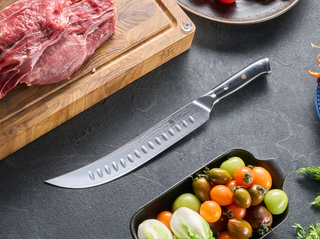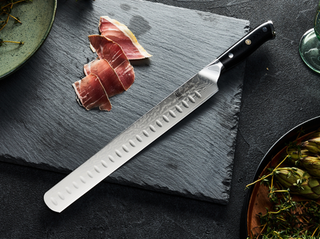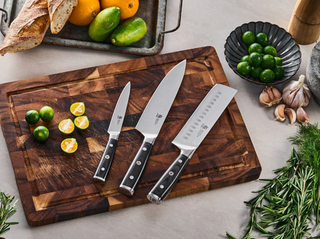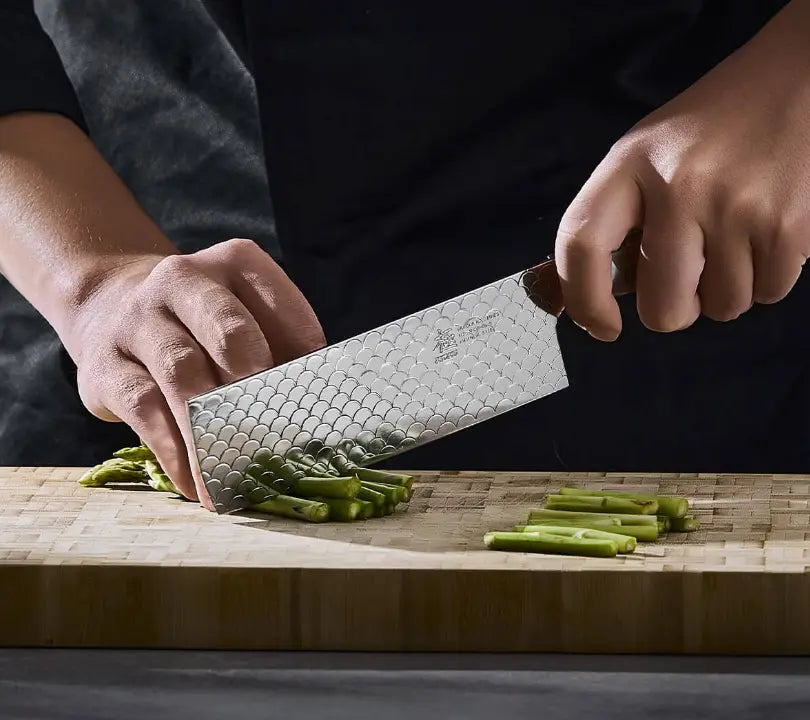Selecting the right knife for your culinary tasks should not just be a matter of availability: choice of knife can either help or hinder the cooking experience and impact the overall quality of the food. Whether you are a home cook or a professional chef, understanding the unique attributes of different knives can greatly enhance your efficiency and precision in the kitchen. This guide will delve into a debate on Nakiri knife vs chef knife to help you choose the perfect knife that suits your culinary needs.

What is a Nakiri Knife Used For?
The Nakiri knife, with its distinctive 5-7 inches design, is a staple in Japanese kitchens and is becoming increasingly popular worldwide due to its specialized utility. Characterized by a straight blade and squared-off tips, the Nakiri knife is designed primarily for the precision cutting of vegetables. Unlike other Japanese knives with a curved blade, the Nakiri knife's flat edge allows for complete contact with the cutting board, enabling clean, uniform slices through vegetables with minimal effort.
Scenarios Where Nakiri Excels:
- Herb Preparation: The Nakiri knife can quickly and efficiently chop large bunches of leafy herbs like parsley or cilantro without bruising the delicate leaves.
- Hard Vegetables: It effortlessly handles tough vegetables like squash and root vegetables, allowing for quick and safe cutting without the need for excessive force.
- Precision Tasks: For dishes that need to be finely chopped or decoratively sliced vegetables, the Nakiri knife can achieve these with ease due to its precise control and balance.
What is a Chef’s Knife Used For?
The Chef knife, on the other hand, is celebrated for its versatility in the kitchen. This all-purpose tool is capable of executing a variety of tasks ranging from slicing and dicing to mincing and chopping. With its curved blade, which generally ranges from 6 to 8 inches, the Chef knife allows for a rocking motion on the cutting board, making it ideal for cutting meat, fish, and vegetables.
Versatile Applications:
- Preparing Meat: The Chef knife's sharp edge excels in preparing many types of meat. It is ideal for trimming fat from steaks, slicing roasts, or carving cooked meats, providing the precision necessary for clean and effortless cuts.
- Handling Fish: The Chef knife is essential for fileting and skinning fish, offering precise control needed to separate the flesh from bones, ideal for preparing both raw and cooked fish dishes without damaging the delicate flesh.
- Mincing Fruits and Vegetables: The chef’s knife's agility makes it perfect for quick and uniform mincing, crucial for presentation and cooking times.
Nakiri vs Chef Knife: A Specific Analysis
| Feature | Nakiri Knife | Chef Knife |
| Blade Shape | Straight | Curved |
| Blade Length | Generally 5-7 inches | Typically 6-8 inches |
| Blade Edge | Flat edge with squared-off tips | Curved blade allows for rocking motion |
| Primary Use | Precision cutting of vegetables | Versatile kitchen tasks |
| Typical Uses | Vegetable preparation like chopping herbs and slicing hard vegetables | Handling a variety of tasks, including cutting meat, fileting fish, and mincing fruits and vegetables |
Top Recommendations of Nakiri Knives and Chef Knives on the Market
As you consider adding a Chef Knife or a Nakiri knife to your collection, here are a few top picks that stand out on the market:
1. 7" NAKIRI KNIVES DAMASCUS STEEL | SHOGUN SERIES
Elevate your culinary experience with this 7" Nakiri Knife of the Shogun Series, crafted from high-grade Damascus steel for unmatched precision and versatility. This Nakiri knife is designed to easily handle vegetable cutting, allowing for straight and clean cuts without bruising. Its design is optimized for efficient up-and-down chopping, making it a favorite for those who value speed and precision in vegetable preparation.
2. NAKIRI KNIVES 440C STEEL | DAIMYO SERIES
This Nakiri Knife of the Daimyo Series features a 7-inch blade made from 440C stainless steel. Its scalpel-like sharpness makes it perfect for those who love Asian cuisine, offering effortless cutting capabilities. Furthermore, the rosewood handle ensures a comfortable grip, making this knife not only a functional tool but also a piece of art in your kitchen.
3. 8" GYUTO CHEF KNIVES VG10 DAMASCUS STEEL | SHOGUN SERIES
Experience the versatility of the Gyuto Chef’s Knife of the Shogun Series, an 8-inch blade forged from VG10 Damascus steel. This knife is a true workhorse, capable of slicing through meat, vegetables, and fruits with precision and ease. Besides, the exquisite hammered finish on the tang adds a touch of elegance.
4. 8" GYUTO CHEF KNIVES | DAIMYO SERIES
Discover the precision of this Gyuto Chef’s Knife of the Daimyo Series, crafted from Japanese stainless steel for optimal sharpness and durability. This 8-inch knife features an ergonomic rosewood handle that provides comfort and balance. The unique mosaic pin on it also adds an artistic touch, making it a standout addition to your kitchen.
Choosing between a Nakiri knife and a Chef Knife depends on your cooking needs. Through this Nakiri vs Chef Knife debate, you can see that the Nakiri knife excels at chopping and dicing vegetables with precision, while the Chef Knife is great for handling a range of kitchen tasks due to its versatility. Please consider what you cook most often and select the knife that best suits your style.
